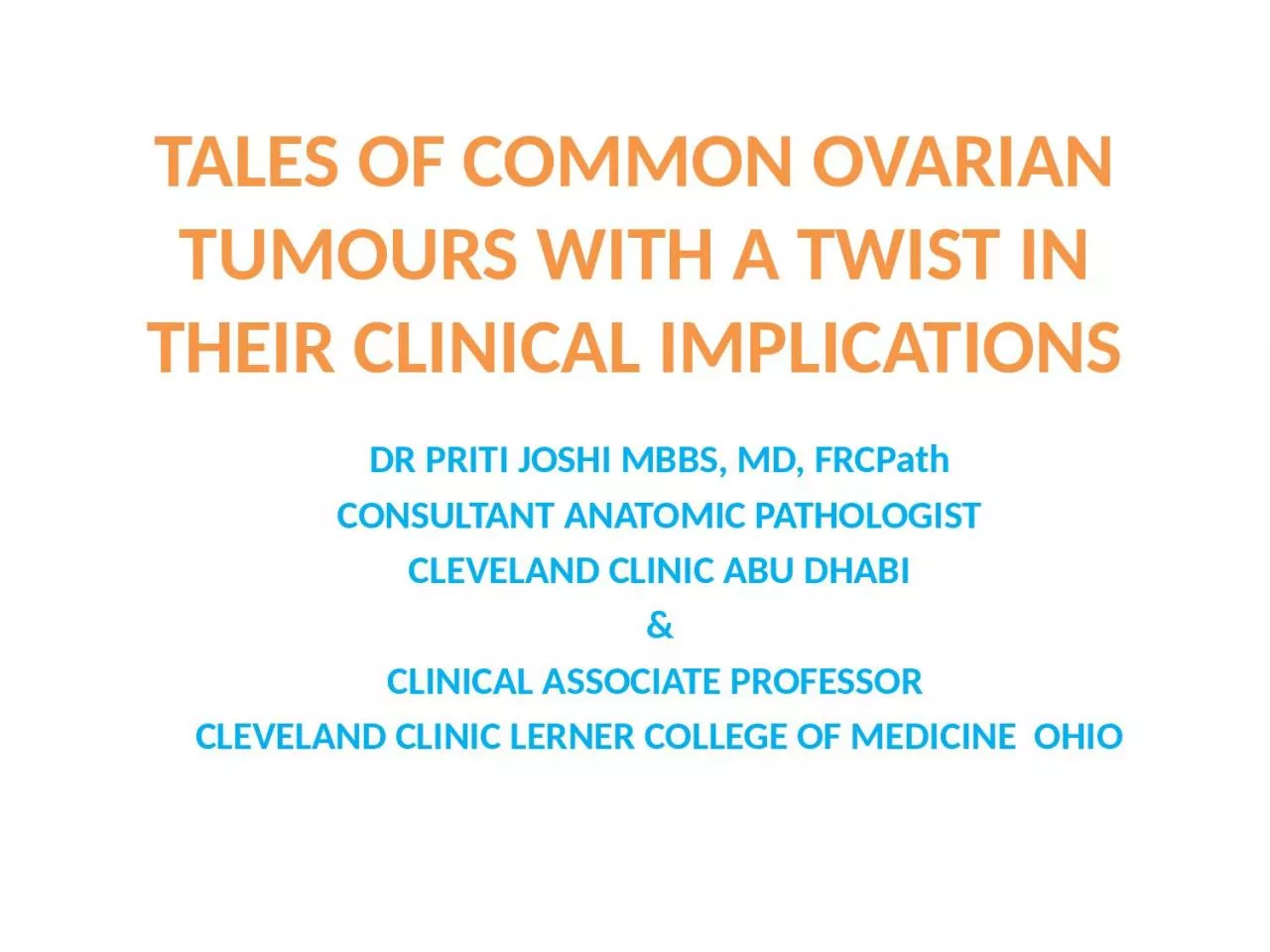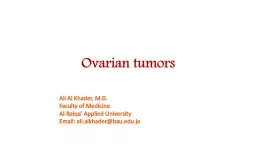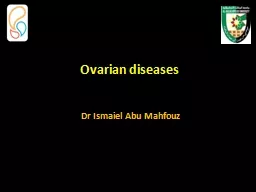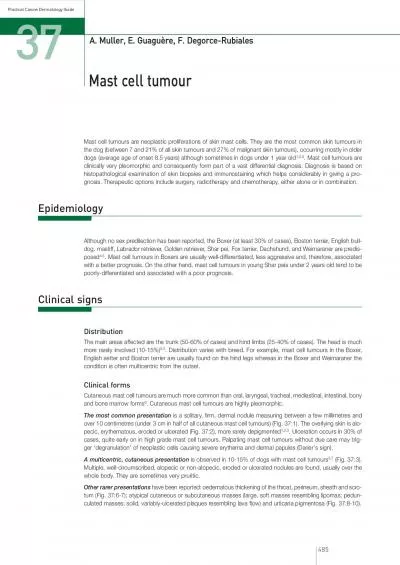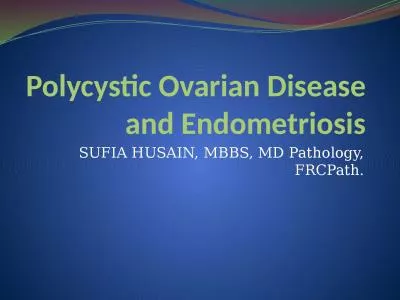PPT-TALES OF COMMON OVARIAN TUMOURS WITH A TWIST IN THEIR CLINICAL IMPLICATIONS
Author : tabitha | Published Date : 2022-06-11
DR PRITI JOSHI MBBS MD FRCPath CONSULTANT ANATOMIC PATHOLOGIST CLEVELAND CLINIC ABU DHABI amp CLINICAL ASSOCIATE PROFESSOR CLEVELAND CLINIC LERNER COLLEGE OF MEDICINE
Presentation Embed Code
Download Presentation
Download Presentation The PPT/PDF document "TALES OF COMMON OVARIAN TUMOURS WITH A T..." is the property of its rightful owner. Permission is granted to download and print the materials on this website for personal, non-commercial use only, and to display it on your personal computer provided you do not modify the materials and that you retain all copyright notices contained in the materials. By downloading content from our website, you accept the terms of this agreement.
TALES OF COMMON OVARIAN TUMOURS WITH A TWIST IN THEIR CLINICAL IMPLICATIONS: Transcript
Download Rules Of Document
"TALES OF COMMON OVARIAN TUMOURS WITH A TWIST IN THEIR CLINICAL IMPLICATIONS"The content belongs to its owner. You may download and print it for personal use, without modification, and keep all copyright notices. By downloading, you agree to these terms.
Related Documents

